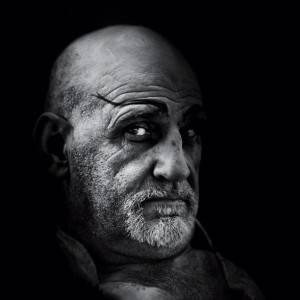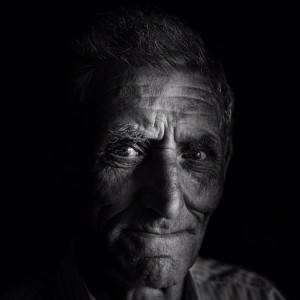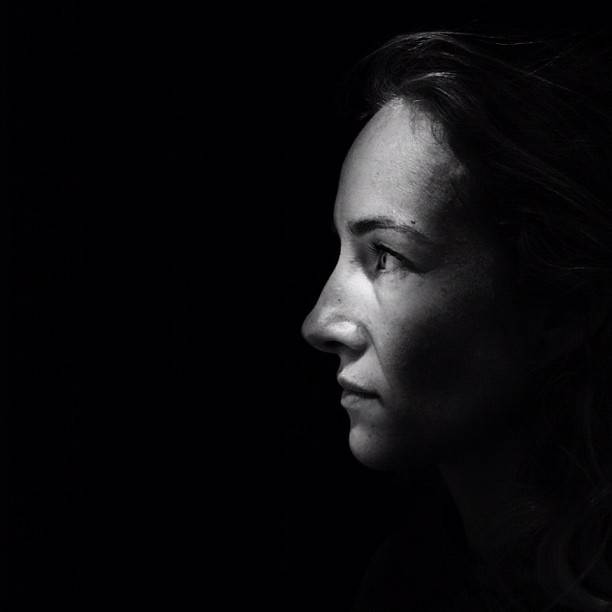The portrait as a metaphor of Photography
by Giacomo Por (aka @saturninofarandola on Instagram)
.
We recently had the great opportunity to interview Giacomo Por (see article here) and listen to his @SaturninoFarandola thoughts during our first Instagramers Congress in Torrevieja. Giacomo (that´s to say) @SaturninoFarandola let Barbara @Ibiza13 explain his reflections about Instagram, mobile photography and social networks. Here below you will find the integral text and some of his oustanding recent portraits. Probably one of my fav streams in Instagram.
.
 If one must talk of photography, then one should do so with what Elliot Erwitt termed «the comedy of man» first and foremost in mind; this approach is much needed in view of the exasperated triumph of technology we are presently witnessing in photography today. A triumph which, in my opinion, is hollow, as it eludes and circumvents themes and issues which in fact ought to be confronted well before becoming hooked to some technological marvel.
If one must talk of photography, then one should do so with what Elliot Erwitt termed «the comedy of man» first and foremost in mind; this approach is much needed in view of the exasperated triumph of technology we are presently witnessing in photography today. A triumph which, in my opinion, is hollow, as it eludes and circumvents themes and issues which in fact ought to be confronted well before becoming hooked to some technological marvel.
.
About Instagram…
This being said, however, I would like to start by briefly mentioning something specifically about Instagram, if I may. What must not be forgotten is that Instagram has allowed a multitude of people to acquaint themselves with the photographic experience, and as such, it should neither be demonised nor sanctified. Personally, I have had the opportunity of getting to know many people, in some cases very talented people with a remarkable sensitivity for photography.
.
I would also like to briefly comment on what has been happening on Instagram in the last few months. Many have witnessed with fear and trepidation the acquisition of Instagram by Facebook, and it certainly raises the question of what the nature and purpose of this platform is. However, the truth is that Instagram has been undergoing a process that has rendered it increasingly similar to Facebook, in terms of social networking, for quite some time and in this process it is arguably true to say that the quality of the content found on Instagram has deteriorated visibly as the social networking taking place on it has rapidly increased. It was inevitable, of course, that as Instagram evolved and users increased the quality of the content would be diluted. Therefore, it is my opinion, that the acquisition by Facebook of Instagram should not worry us excessively. Instagram had been facebooking itself already for some time.
.
 About Photography and the way it is perceived in Instagram…
About Photography and the way it is perceived in Instagram…
Another critical point, (and this point is much more important as it concerns photography and the way it is perceived), is the attitude towards photography that I have encountered on Instagram. There seems in fact to be a tendency towards an ever increasing critical autoarchy, as well as an inability of relating to photography as something which actually exists and lives and flourishes outside of Instagram. In brief, there seems to be a tendency within Instagram of taking refuge in a limited, isolated niche where one can believe, indeed fantasize, that Instagram is what photography is really about.
This phenomenon occurs for reasons that are too lengthy to explain here. However, the real danger in this belief that there is no photography outside of Instagram is that it will lead to isolation and marginalisation. It is needless to add how foolish and damaging such an attitude is. What they see as a liberation is in truth a condemnation. It would be a shame, in fact, to stifle and limit in this way the excellent qualities of those many talented photographers whom I have had the pleasure to meet in this context. I therefore hope that platforms such as Instagram, EyeEm, StreamZoo will avoid condemning themselves to total irrelevance by isolating themselves in a bubble, ignoring the rest of photography.
At the end of the day, there is no old and new photography, the real difference is only between good and bad photography. Nothing else.
.
Curiously, there is another parallel phenomenon taking place, namely the proliferation of numerous apps which allow the editing of one’s photos. Layering, vintage and much more can be fun and in many ways satisfying, but these apps and the exuberant editing they encourage are reminiscent, ironically, of Pictorialism. For those of you who are not familiar with Pictorialism, this was a movement which took place at the turn of the 20th century – the 1900s – in which photography on its own was not deemed sufficient as a stand alone art form, and that to be considered of proper value it had to be embellished with painting. In brief, photography had to mimick painting to be considered art. So, I ask, isn’t it curious how by using apps which are considered hip and innovative we end up using the same sort of paraphenaelia which was becoming tired and obsolete already 100 years ago?
 Instagram is not a photographic Eldorado.
Instagram is not a photographic Eldorado.
Many people, perhaps too many, currently believe to have found in Instagram a photographic Eldorado, somewhat ignoring or being ignorant of everything that has happened in photography prior to Instagram’s arrival.
The inescapable truth is that nothing new has been invented by changing the name of something which already existed. «Mobile photography» is the term, or tag, which in itself does not indicate anything new. The fact of the matter is that it indicates an aspect of photography which has already been experimented widely, and extremely successfully, by photographers such as Alfred Stieglitz, Lewis Hine, Walker Evans, Vivian Maier and Helen Levitt, just to mention a mere few.
These incredibly talented photographers did not call it «mobile photography» but they were the pre-cursors and founders of it. To ignore their existence and their work is to ignore the simple reality that with the advent of what we now term «mobile photography» in truth nothing new has been invented. Moreover, let me please take this opportunity to state that these incredible photographers have also taught us another simple truth: it is neither technique nor technology which determine the way in which man can interpret differently his existence.
These photographers were clearly not using mobile phones. On the contrary, they often had slow and cumbersome cameras. The ‘mobility’ did not come from the equipment they used but from the spirit which with they took the pictures. From the way they wanted to see the world around them and the way they wanted us to see it through them. The notion that «mobile photography» is a new invention seems to be unquestioningly accepted as truth. This is just to say that a knowledge of what preceded us, photographically speaking, is not a bad thing as it helps to avoid confusing reality with fiction and, more importantly, it helps remind us that a certain type of photography is not necessarily linked to a form of equipment. Mobile photography can happen without the use of a mobile. What is important is not the device used to make the picture, but the intention and spirit with which the picture was taken.
.
 About Portrait Photography.
About Portrait Photography.
Turning our attention now to portrait photography, I would like to start by saying that often portraits contain a truth that not even the person portrayed can know. A portrait captures a truth that is transitory and elusive. It transcends the person portrayed. The truth, often, is not even the history of a person, albeit that memory is an unquestionable form of truth. In the end, a portrait of a person is one aspect of his or her truth.
.
It follows that a portrait is not the equivalent of an identity card, or a passport. An individual is more than the sum of his or her facial geometries and one does not take a portrait to certify something or someone. Not even documentary photography has as its objective the aim of certifying. The aim of a documentary is rather that of providing a key with which to read reality and portraits are a perfect exemplification of this concept. When we take a portrait of a person, we are taking in their likeness but also modifying it at the same time, for it is through our vision that their face is being expressed. In this sense the ‘falsehood’ of portrait photography saves us from the trap of producing a mere identity card of the person portrayed.
Portrait photography contains within it a multitude of realities, and as such has its own metalanguage. Physiognomy, memory, identity, history, geography, all this and much more is contained within each single portrait and it is precisely because of this that portrait photography is the real metaphor of the entire photographic experience.
With regard to my own work, there is not much that I want to say here, I hope, however, to have given you an overview on the fundamental principles on which I base my work. As those who follow me know, I mainly work in black and white yet I have never abandoned colour. I believe that within one’s individual photographic experience, one should never stop researching and experimenting. Without real liberty of expression and freedom of intuition nothing new or sincere can be obtained. It would be like wanting to go to the moon by digging a whole in the ground.
 How I manage Light in my pictures?
How I manage Light in my pictures?
Many ask me how I manage to obtain my light in the pictures I take. In truth, I can assure you that things are more simple than what they seem. I can say that light is the homage that truth gives to darkness. Just like darkness is the sentiment that truth gives to life. Light and darkness are inseparable elements which nevertheless have a different destiny and portrait photography is the most important ambit where the interplay of these two elements can be witnessed with such clarity. This too is why portrait photography is the real metaphor of photography as a whole.
.
On a final note, precisely because of the dual and contrasting elements contained in portrait photography, namely truth and falsehood, light and darkness, no unnecessary form of posturing is needed. I urge all of you who enjoy pursuing portrait photography to be free.
To liberate yourselves from worrying about the technicalities of photography and focus on seizing the essence of what you are taking a portrait of, bearing in mind that the moment you are about to capture will never again be repeated. You alone are responsible for capturing the uniqueness of that moment and this uniqueness is the gift which is yours to seize one portrait at a time, one unique moment at a time.
Whatever it is that you are capturing in that moment: whether it is a landscape, or a face, or the street of the place in which you live. It is the search for that event which Henri Cartier Bresson called «the decisive moment». And in the pursuit of capturing this decisive moment, I urge you to cast aside any unnecessary posturing: be it in the form of unnecessary editing or unnecessary attitude. Such posturing, which we can unfortunately witness more and more around us, merely make such portraits seem out of place and inauthentic. Portrait photography needs no posturing.
.
To photography, because of it’s dual nature of truth and falsehood sublime do not need attitudes. Do not need hypocrisy posing in contemporary increasingly tragic and ridiculous. So the photography, then the portrait, is useless just because it is so necessary to the existence of all.
@saturninofarandola ( @giacomopor in Twitter)
(Translated by Barbara Ungaro aka @ibiza13)




